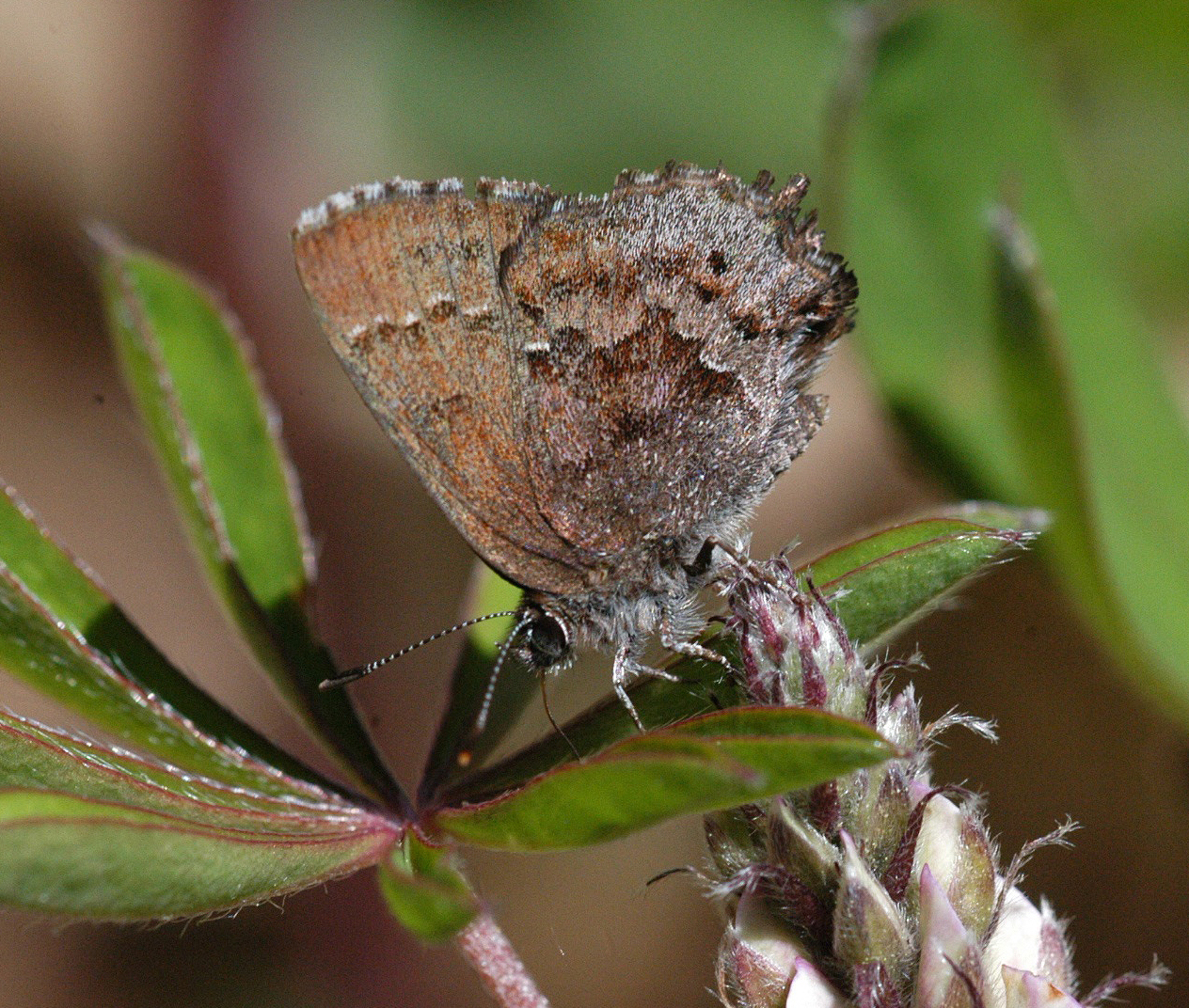
In a new study, Hamilton College Biology Professor Ernest Williams and Boston University researchers have found that butterflies show signs of being affected by climate change in a way similar to plants and bees, but not birds, in the Northeast United States. The researchers focused on Massachusetts butterfly flight periods, comparing current flight periods with patterns going back more than 100 years using museum collections and the records of dedicated citizen scientists. Their findings indicate that butterflies are flying earlier in warmer years.
“More and more of the effects of climate change on plants and animals are being discovered,” Williams, a co-author of the study, explained. “In this study we found that spring-emerging elfin butterflies in Massachusetts are appearing about 8 days earlier than they did 24 years ago and that they are especially sensitive to average temperatures in March and April,” he said.
“Summer-emerging hairstreak butterflies, on the other hand, are emerging only about 3 days earlier than they did 24 years ago. The effect of rising temperatures on butterflies is similar to that on plants and bees but greater than that on migratory birds, showing that living organisms respond differently to climate change. This difference can lead to mismatches between some animals and their food supply,” Williams noted.
As a result, climate change could have negative implications for bird populations in the Northeast, which rely on butterflies and other insects as a food source. The team, which also includes includes Richard Primack (Boston University), Caroline Polgar (Boston University), Sharon Stichter (Massachusetts Butterfly Club), and Colleen Hitchcock (Boston College), will published its findings in the February 12 online edition of the journal Biological Conservation.
While the effect of climate change on plant and bird life cycles in eastern North America has been well examined, studies of the effects of climate change on insects are rare, so these finding represent an important contribution. This new study investigated whether the responses to climate warming in Massachusetts of 10 short-lived butterfly species known as elfins and hairstreaks are similar to responses seen in plants, birds and bees.
Another unique feature of this study is its use of data from museum collections as well as data gathered by the Massachusetts Butterfly Club, a group of dedicated citizen scientists who love butterflies. Use of this data gave the researchers an opportunity to compare butterfly flight periods dating back to the late 1800s.
The researchers obtained more than 5,000 records of butterflies in flight using museum collections (1893–1985) and citizen science data (1986–2009), then analyzed the data using statistical models to determine how butterfly flight times are affected by temperature, rainfall, geographic location and year.
The researchers found that the start of the butterfly flight period advances on average by 2 days for each degree F increase in temperature. The response of these butterfly species to temperature is similar to that of plant flowering times and bee flight times and is significantly greater than that of bird arrival times, which increases the likelihood of ecological mismatches with migratory birds arriving after the first spring flush of their insect food.
The research group also found that observations by citizen science groups such as the Massachusetts Butterfly Club were an effective and largely untapped source of information that could be used to investigate the potential impacts of climate change on butterflies. Such data provides an opportunity to inform conservation policies on these species and associated habitat. While data from museums was helpful, it was less abundant and therefore less useful than the citizen science dataset.
Posted February 13, 2013
